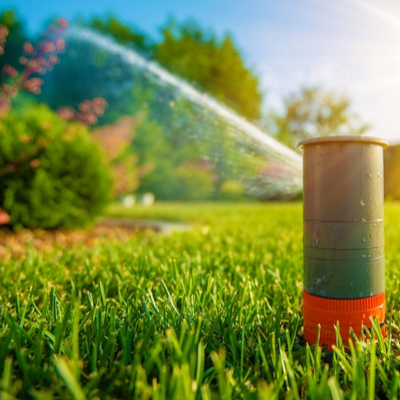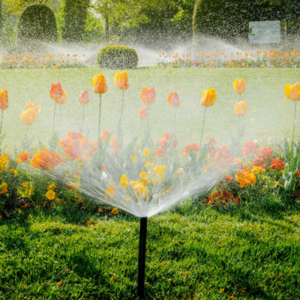
As trees start to bud, flowers bloom, and everything comes back to life, you’re likely thinking it’s time to get your sprinkler system up and running again. That’s wise, because waiting until the lawn is browned and struggling can jeopardize its health. Don’t wait for your spring sprinkler set up, sooner is better.
The truth is, you can’t just turn on the system like flipping a switch. You need to go through a process to ensure the system is turned on properly and operating as it should. Starting early will give you time to make repairs or adjustments before the sprinklers become vital.
Before You Begin Your Sprinkler Set Up
While it might look and even feel like spring outside, don’t let your emotions get the better of you. The soil might not be thawed all the way, and that’s a problem. Turning on your sprinklers could result in water freezing in the pipes, which expands and as a result, ruptures the pipes. Therefore, a little caution will help you avoid a major repair.
The best way to test the soil is to stick a shovel into it. For example, if you can insert the shovel 12 inches deep without running into frozen ground then you’re good to start up the sprinkler system.
Pre-Startup Process
Just like with an airplane, sprinkler set up requires you to check out different items before firing them up:
- Ensure the timer is working properly, and that it has the correct time/date programmed
- Make any necessary adjustments to the watering schedule
- Locate each sprinkler head and clear away anything blocking their operation
- Do a quick visual inspection of each sprinkler head for signs of damage, and replace any that are broken
- Look over the sprinkler system valves for obvious damage, installing replacements as needed
- Close all manual drain valves
Turning on the System 
Restoring water to the sprinkler system isn’t just a matter of turning a valve and walking away. You need to go through the following checklist or face serious problems like flooding or uneven watering and an unhealthy lawn later.
- First, open the main water valve slowly. If you open it quickly, the surge in pressure or water hammer can damage valves and even burst pipes. It’s worth your time to allow water to flow into the pipes slowly.
- Next, check the water pressure using a gauge. Too much pressure can damage different parts of the system, and too little means your lawn won’t get enough water. If your system doesn’t have a pressure regulator, now might be the time to install one.
- Finally, run the system and check each sprinkler head to ensure it’s spraying properly. Adjust the heads as needed, and repair anything damaged you didn’t catch before. Watch for puddling on your lawn, which may indicate a broken valve.
Throughout the season, you need to be watching the sprinkler system for signs of trouble. If you run it at a time when you’re gone or asleep, turn it on periodically to see how the sprinkler heads, etc. are operating.
Having a professional to help with repairs and maintenance makes caring for your sprinkler system far easier.
Contact Greentech Lawn and Irrigation to make an appointment.

